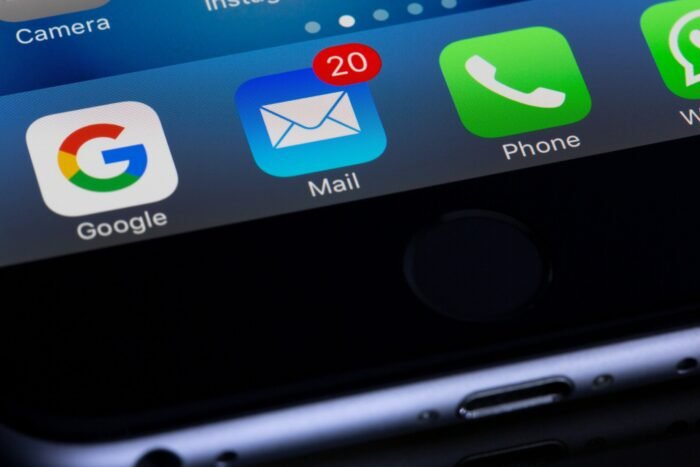Welcome to the world of email communication in administration! As a busy administrator, you know that effective and efficient email management is crucial for staying organized and productive. With countless messages flooding your inbox every day, streamlining your email communication becomes essential.
In this blog post, we will explore administrative best practices for optimizing your email workflow. From organizing your inbox to automating tasks and ensuring timely responses, we’ve got you covered. So grab a cup of coffee, sit back, and let’s dive into the realm of streamlining email communication: administrative best practices!
Streamlining Email Communication: Administrative Best Practices
1. Email Efficiency in Administration
When it comes to email efficiency in administration, time is of the essence. As an administrator, you’re responsible for juggling multiple tasks and managing a constant flow of information. Streamlining your email communication plays a vital role in maximizing productivity and staying on top of things:
- One way to boost email efficiency is by setting aside specific times throughout the day to check and respond to emails. Constantly switching between tasks can be disruptive, so dedicating uninterrupted blocks of time ensures focused attention on your messages.
- Another key aspect is organizing your inbox effectively. Create folders or labels based on different categories such as clients, projects, or priority levels. This allows you to quickly locate important emails when needed instead of scrolling through a cluttered inbox.
- Moreover, utilizing features like flags or stars can help you mark urgent messages that require immediate action or follow-up. By visually highlighting these items, you can easily prioritize and tackle them first.
- Additionally, consider implementing keyboard shortcuts within your email client software for quicker navigation and response handling. These shortcuts save valuable seconds with each click and keystroke—ultimately adding up to significant time savings over the course of a day.
- Furthermore, take advantage of rules or filters offered by your email provider. Automate certain actions like sorting incoming emails into designated folders based on senders’ addresses or subject lines. This minimizes manual effort while ensuring essential messages are promptly addressed without getting lost amidst spam or less critical correspondence.
Remember that simplicity is key when it comes to writing effective emails as well. Be concise yet clear in your message content so recipients can grasp the main points at a glance without sifting through lengthy paragraphs.
2. Inbox Organization Strategies
When it comes to email communication, staying organized is essential for efficient administrative work. The key to managing a flood of emails lies in implementing effective inbox organization strategies:
- First and foremost, create folders or labels to categorize your emails based on different topics or projects. This will help you quickly locate specific messages without wasting precious time searching through a cluttered inbox.
- Another helpful strategy is to utilize color-coding options provided by most email platforms. Assigning different colors to different categories can visually differentiate between urgent tasks, important updates, and general correspondence.
- Additionally, take advantage of the search function within your email client. Instead of scrolling endlessly through your inbox, simply enter relevant keywords or sender names into the search bar and let technology do the work for you.
- To further streamline your email management process, consider setting up filters or rules that automatically sort incoming messages into designated folders based on pre-set criteria. This eliminates the need for manual sorting and ensures that important emails are easily accessible when needed.
- Make it a habit to regularly archive or delete unnecessary emails. Keeping an excessively large inbox not only slows down your system but also makes finding crucial information more challenging amidst all the clutter.
By implementing these inbox organization strategies into your daily routine as an administrator, you’ll be better equipped to stay on top of your workload and respond promptly to important communications – ultimately streamlining email communication in administrative tasks!
3. Email Etiquette for Administrators
Effective email communication is crucial in the administrative role. As an administrator, you represent your organization and must maintain professionalism in all interactions, including emails. Here are some essential email etiquette tips that will help you streamline your communication:
1. Use a professional email address: When communicating with colleagues or clients, it’s important to have an email address that reflects your professional identity rather than using a personal or unprofessional one.
2. Write clear and concise subject lines: A well-crafted subject line helps recipients understand the purpose of your email at a glance. Keep it brief but informative to grab attention and ensure timely responses.
3. Be mindful of tone: Without verbal cues, misunderstandings can easily occur via email. Always strive for a polite and respectful tone by using appropriate language and avoiding sarcasm or humor that may be misinterpreted.
4. Keep messages focused: Administrators often receive numerous emails daily, so keeping messages concise and to the point is essential for efficiency. State your purpose clearly in the opening sentences to help recipients quickly grasp the content.
5. Proofread before sending: Typos and grammatical errors reflect poorly on your professionalism and attention to detail. Take a moment to proofread each message before hitting send.
6. Respond promptly: Aim to reply within 24-48 hours unless otherwise stated or if additional research is needed before responding thoroughly.
7.Use proper salutations and closings: Begin emails with appropriate greetings such as “Dear” followed by the recipient’s name(s) when addressing individuals directly; use more general greetings like “Hello” when emailing large groups.
8.Use BCC judiciously: If sending mass emails where recipients don’t need access to each other’s contact information, use blind carbon copy (BCC) instead of CC (carbon copy). This protects privacy while still allowing efficient communication.
9.Avoid unnecessary attachments: Before attaching files, consider whether they are truly essential. Large attachments can clog recipients’ inboxes and may be better shared via a file-sharing platform.
10.Know when to use email: While email is a useful tool for most communication, there are times when it may be more appropriate to speak in person or over the phone. Use your judgment and consider the urgency and complexity of the message.
11.Use professional signatures: Your email signature should include your full name, job title, organization name, and contact information. This makes it easier for recipients to identify you and respond appropriately.
By following these email etiquette tips, you can maintain professionalism and effective communication in your role as an administrator. Remember to always think before hitting send and strive for clear and respectful communication at all times.
4. Email Filters and Rules: Automating Email Handling for Efficiency
In the fast-paced world of administration, staying on top of email communication can be a challenge. However, by implementing email filters and rules, you can automate your email handling process and significantly improve efficiency:
- Setting up filters allows you to automatically sort incoming emails into specific folders based on criteria you define. For example, you can create a filter to direct all emails from a particular client or project into a designated folder. This not only helps keep your inbox organized but also ensures that important messages are easily accessible when needed.
- Rules take filtering a step further by enabling automated actions to be taken based on certain conditions. You can set rules to automatically forward specific types of emails to other team members, mark them as important or urgent, or even delete irrelevant messages altogether.
- By utilizing these automation tools, you free up valuable time that would otherwise be spent manually sorting through countless emails every day. Instead, you can focus on more pressing tasks knowing that your important communications are being handled efficiently in the background.
- Keep in mind that while automating email handling is incredibly helpful, it’s essential to regularly review and update your filters and rules as needed. As circumstances change or new projects arise, adjusting these settings will ensure continued effectiveness.
Implementing email filters and rules is just one way administrators can optimize their workflow for maximum productivity. In the next section, we’ll explore strategies for reducing clutter in your inbox – another crucial aspect of streamlining email communication within administrative roles.
5. Reducing Email Clutter: Strategies for a Cleaner Inbox
Are you tired of staring at a cluttered inbox, feeling overwhelmed by the never-ending stream of emails? Don’t worry; you’re not alone. Managing email overload is a common struggle for many administrators. But fear not, because there are strategies you can employ to regain control and achieve a cleaner inbox:
- One effective strategy is to unsubscribe from unnecessary mailing lists or newsletters that only contribute to the clutter. Take some time to evaluate which subscriptions are truly valuable and relevant to your work. By decluttering your inbox from these non-essential emails, you’ll free up space for more important messages.
- Another helpful tactic is creating folders or labels within your email client. Categorizing emails into specific folders based on their subject or sender can make it easier to locate them later on when needed. This organizational method keeps everything neatly sorted, making it less likely that important messages will get lost in the sea of unread emails.
- Setting aside dedicated time each day specifically for email management can also be extremely beneficial. Rather than constantly checking and responding to messages throughout the day, designate periods where you focus solely on processing and organizing your inbox. This approach allows you to give proper attention and thoughtfulness to each message without getting distracted by constant interruptions.
- Additionally, utilizing filters and rules within your email client can automatically sort incoming mail into designated folders based on criteria such as sender, subject line keywords, or even specific words within the body text. These automated processes eliminate manual effort in organizing incoming emails while keeping them easily accessible when needed.
- Implementing an efficient filing system where archived emails are stored away properly is another way to maintain a clean inbox. Create separate folders for different types of reference materials or completed tasks so that they don’t clutter up your primary workspace but remain accessible if required later down the road.
Remember that reducing email clutter doesn’t end with organization alone – it’s crucially about managing your own email habits. Resist the urge to check your inbox every few minutes and only open an email when you have the time and headspace to respond. Responding to emails promptly is important, but not at the cost of your productivity.
6. Response Time Management
As an administrator, one of the most crucial aspects of email communication is managing response time. Promptly addressing emails not only demonstrates professionalism but also helps streamline communication within your organization:
- To effectively manage response time, it’s essential to prioritize incoming emails based on their urgency and importance. Start by setting aside specific times throughout the day dedicated solely to checking and responding to emails. This allows you to focus and respond in a timely manner without constantly interrupting other tasks.
- Another helpful strategy is utilizing email flags or labels to mark urgent messages that require immediate attention. By color-coding or categorizing your emails, you can easily identify those that need prompt responses.
- In addition, consider implementing automated responses for certain types of inquiries or commonly asked questions. This not only saves time but also ensures consistent messaging across all interactions with clients or colleagues.
- Furthermore, establish realistic expectations regarding response times by clearly communicating them through auto-generated email signatures or templates when appropriate. Letting people know when they can expect a reply fosters transparency and reduces unnecessary follow-ups.
- Remember that effective response time management requires balance – be proactive in addressing urgent matters while still allowing yourself enough time for deep work and focusing on important projects.
By implementing these strategies consistently, you can enhance your efficiency as an administrator and contribute to streamlining overall email communication within your organization.
7. Email Templates and Signatures
Creating email templates and using them strategically can be a game-changer for administrators looking to streamline their email communication. With the repetitive nature of administrative tasks, having pre-written templates ready to go can save a significant amount of time and effort:
- Templates allow you to have standardized responses for common inquiries or requests, ensuring consistency in your communication. Whether it’s responding to meeting requests, answering frequently asked questions, or providing updates on projects, having templates at your disposal can help you respond quickly without sacrificing quality.
- In addition to saving time, using email signatures can also enhance professionalism and brand consistency. Your signature is an opportunity to showcase important contact information such as your name, title, organization, phone number, and social media handles. It’s like leaving a digital business card at the end of each email!
- By utilizing customizable templates and creating a professional signature that aligns with your organization’s branding guidelines, you not only improve efficiency but also leave a lasting impression on recipients.
- Remember to personalize each template before sending it out by addressing the recipient by name whenever possible. This small touch goes a long way in building rapport and strengthening relationships.
- Furthermore, consider categorizing your templates based on different types of emails (e.g., customer support inquiries versus project updates). This will allow for easy retrieval when needed.
- Lastly, regularly review and update your templates as necessary. As circumstances change or new situations arise within your role as an administrator, it is crucial to ensure that the content remains accurate and up-to-date.
8. Collaborative Email Tools: Streamlining Communication within Teams
Effective communication is crucial for any team to function smoothly and efficiently. With the ever-increasing reliance on email as a primary mode of communication, it becomes essential for administrators to find ways to streamline and enhance this process. Collaborative email tools are emerging as invaluable resources that can help teams work together seamlessly, improving productivity and reducing miscommunication:
- One such tool is the use of shared mailbox platforms that allow multiple users to access and manage a single inbox. This eliminates the need for forwarding or CCing emails among team members, ensuring everyone has real-time visibility into ongoing conversations. Additionally, these platforms often offer features like assigning emails to specific team members or tagging them with relevant labels for easy organization.
- Another useful collaborative email tool is the integration of project management software with your inbox. These integrations enable you to create tasks directly from emails, assign them to team members, set due dates, and track progress – all without leaving your email client. This streamlines workflow by keeping all relevant information in one place and making it easily accessible.
- Furthermore, some collaborative tools provide chat-like functionality within an email thread itself. This feature allows team members to have quick discussions without cluttering their inboxes with additional messages or switching between different platforms.
- In addition to these tools, utilizing shared calendars can also greatly improve coordination within teams. By having a centralized calendar where everyone can view schedules and availability, scheduling meetings becomes much simpler while minimizing conflicts.
- Remember that when implementing collaborative email tools, it’s important not only to choose the right platform but also ensure proper training and adoption across the entire team. Regularly review usage patterns and gather feedback from users so you can address any challenges or limitations proactively.
By leveraging these collaborative email tools effectively within your administrative role, you can foster efficient teamwork while reducing unnecessary back-and-forth communication among colleagues – ultimately saving time for everyone involved.
9. Email Security Best Practices
In today’s digital age, email security is of utmost importance. With cyber threats becoming increasingly sophisticated, it is crucial for administrators to implement best practices to protect sensitive information and maintain the integrity of their communication channels:
- One fundamental aspect of email security is password management. It is essential to use strong, unique passwords for all email accounts and regularly update them. Avoid using easily guessable phrases or personal information that can be easily obtained by hackers.
- Another important practice is enabling two-factor authentication (2FA) whenever possible. This adds an extra layer of protection by requiring a second form of verification, such as a code sent to your mobile device, in addition to your password.
- Furthermore, administrators should be cautious when opening emails from unknown senders or clicking on suspicious links or attachments. These could contain malware or phishing attempts aimed at stealing sensitive data.
- Regularly updating software and antivirus programs is also crucial in maintaining email security. Keeping these systems up-to-date helps prevent vulnerabilities that can be exploited by hackers.
- Educating staff members about email security risks and best practices is equally important. Conduct training sessions on identifying phishing emails, recognizing suspicious attachments or links, and emphasizing the importance of reporting any potential security breaches promptly.
- Consider implementing encryption technologies for transmitting sensitive data via email. Encryption ensures that only authorized recipients can access the content within an email message.
By following these best practices for email security administration professionals can minimize the risk associated with cyber threats while ensuring safe communication within their organizations. It is also vital to regularly review and update security policies and procedures to stay ahead of evolving threats.
Conclusion
Streamlining email communication is essential for efficient administration. By implementing the best practices outlined in this article, administrators can optimize their inbox organization, improve response time management, and enhance overall email efficiency. Inbox organization strategies such as creating folders and using filters can help administrators categorize and prioritize incoming emails. Email etiquette plays a vital role in maintaining professionalism and clear communication within administrative roles.
Automating email handling through filters and rules saves time by automatically sorting emails into designated folders or applying specific actions. This reduces manual effort and ensures that important messages are not overlooked amidst clutter. Reducing email clutter requires regular maintenance of the inbox, including deleting unnecessary emails, unsubscribing from irrelevant mailing lists, and utilizing features like archiving or flagging important messages.
Managing response times is crucial for effective communication. Administrators should strive to respond promptly to urgent requests while setting realistic expectations for non-urgent matters. Email templates provide standardized formats for commonly sent messages, saving time on repetitive tasks. Customized signatures further enhance professionalism by displaying contact information consistently across communications.
Collaborative email tools enable seamless communication within teams through shared inboxes or project-specific threads. These tools streamline coordination among team members while minimizing confusion or miscommunication. Maintaining email security is paramount to protect sensitive information from unauthorized access or potential breaches. Utilizing strong passwords, enabling two-factor authentication, and being cautious about opening suspicious attachments contribute to a secure digital environment.
By implementing these streamlined processes and adopting best practices for managing email communications effectively, administrators can create more productive work environments that foster clear communication channels with colleagues, clients, and stakeholders alike.






![Stress Management Techniques for Administrative Professionals [Best 7] 7 Stress Management Techniques for Administrative Professionals](https://zoets.b-cdn.net/wp-content/uploads/2024/02/pexels-mikhail-nilov-8297240-scaled-e1708541459861.jpg)


![Budgeting and Financial Management for Administrative Teams [Best 8] 10 Budgeting and Financial Management for Administrative Teams](https://zoets.b-cdn.net/wp-content/uploads/2024/02/pexels-tima-miroshnichenko-6693656-scaled-e1707650802680.jpg)
![Conflict Resolution Strategies for Administrative Professionals [Best 8] 11 Conflict Resolution Strategies for Administrative Professionals](https://zoets.b-cdn.net/wp-content/uploads/2024/02/pexels-tima-miroshnichenko-5686082-scaled-e1707649239731.jpg)

